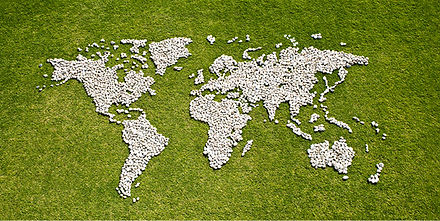Caitlyn (McClure) Batche
Sustainable Business Managment Portfolio
WORLDWIDE TRENDS ANALYSIS
This Worldwide Solar Trends (Social Scan) identifies social aspects related to the solar production, employment, labor practices, and any other social factor which is affected by solar production.
Although the US has increased its solar production, it ranks low in solar production on a world-wide evaluation.“Shares of SolarCity, provider of rooftop solar systems, have soared more than sevenfold since going public, leading solar power craze that has swept Wall Street (New York Times, 2014).”
“Polysilicon, based on sand (semi-conductor material) requires large processing plants. A new plant takes about two years to build and costs between $500 million and $1 billion (Platzer, 2012).”
“A handful of manufacturers from the United States, Europe, and Japan currently dominate polysilicon production, with much of it now located in Europe and the United States but increasingly manufacturers like GLC Solar from China and OCI from South Korea have expanded their production level (Platzer, 2012).”
“Biggest solar markets have been Europe (principally Germany, Italy, and Spain) and Japan. Together, they comprised about two-thirds of the world’s cumulative PV installed capacity of nearly 70 GW in 2011 (Platzer, 2012).”
The U.S. market for PV products is relatively small, accounting for about 7% of global PV (Platzer, 2012).
The U.S. solar capacity in 2011 was more than double 2010(Platzer, 2012). 43% of installations linked to the electric grid during 2011were for commercial or other non-residential customers, excluding utilities (Platzer, 2012).
Water recycling is used in solar production to prevent water waste (Platzer, 2012).
References:
Platzer, M.,D. (2012, June 13) U.S. Solar Photovoltaic Manufacturing: Industry Trends, Global Competition, Federal. Retrieved February 1, 2014 from: http://www.fas.org/sgp/crs/misc/R42509.pdf
New York Times.( 2014, January 4). Solar Energy. Retrived February 1, 2014 from: http://topics.nytimes.com/top/news/business/energy-environment/solar-energy/
Strategic Group Map & Worldwide Trends Analysis

To develop a strategic group map it is important to decide what aspects need to be measured and how each factor is related. This may not always be clear, which is why environmental scans are performed. If two factors are known to be directly correlated, other factors should be selected to perform the scan. The correlation between energy forms, their prices, and their environmental impact has been assessed in this strategic group map. The source is outdated, so further research should be done to assure information has not changed.
Reference:
Local Clean Energy Alliance. (2008). The 21st Century Energy Greenprint for the East Bay. Retrieved from: http://www.localcleanenergy.org/resources/html/greenprint


